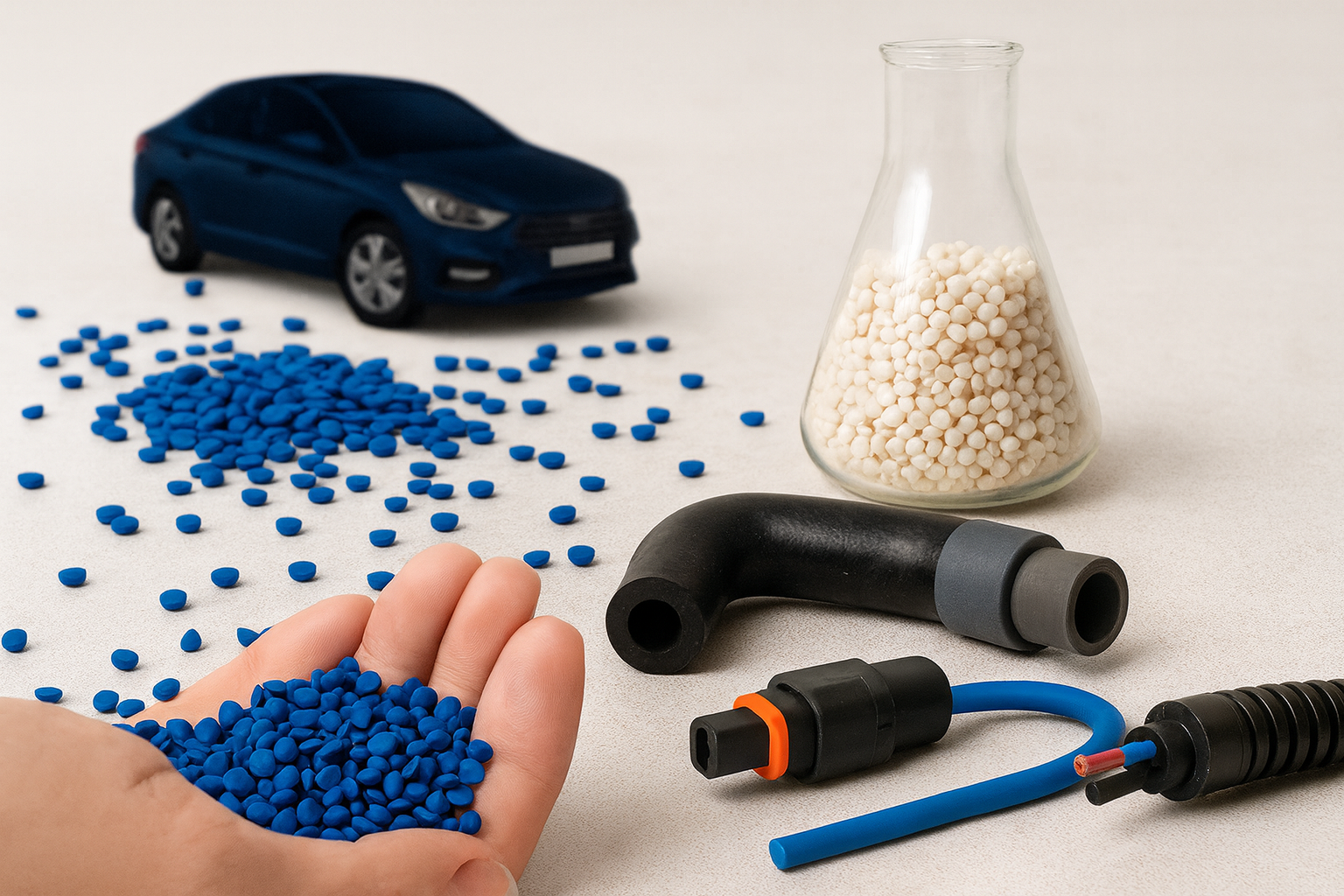LYS Polychem Blog

Best PVC Compound Material Types and Properties For Automotive
Polyvinyl chloride (PVC) is a versatile material that is increasingly favoured in the automotive industry. Thanks to its lightness, cost-effectiveness and durability, it meets the expectations of both manufacturers and consumers. So, which types of PVC components are used in automotive and what are the prominent features of these components?
Why is PVC so Common in the Automotive Industry?
Today, vehicle production covers multidimensional objectives such as weight, cost and aesthetics as well as durability. PVC is one of the rare polymers that can offer solutions to almost all of these needs. It is available in different formulations such as rigid PVC, soft PVC and plastisol, making it a versatile option in vehicle design.
PVC compound is lighter than traditional materials such as steel or aluminium. This improves fuel efficiency and helps reduce carbon emissions. It also reduces the cost of production, giving automotive brands a competitive advantage.
Main PVC Types Used in Automotive
Rigid PVC Compound (Rigid PVC)
Rigid PVC compound is used for external parts requiring high mechanical strength. It is known for its resistance to UV rays and impact resistance. It is widely preferred especially in exterior door strips, cable ties, fender inner coatings and decorative surface film applications.
Its prominent features:
Resistant to external environment and temperature changes.
Suitable for aesthetic surface coatings.
Although it is light, it is resistant to impacts.
Soft PVC Compound (Flexible PVC)
Soft PVC stands out in interior applications where flexibility and comfort are required. It is widely used in films, upholstery, door panels, ceiling coverings and seat covers. It is also preferred for the insulation of in-vehicle wiring harnesses.
Its prominent features:
It has high formability.
It is hygienic as it is easy to clean.
It is resistant to mechanical friction and scratching.
Provides sound insulation and reduces vibration,
General Advantages of PVC in Automotive
PVC offers many advantages for automotive manufacturers. If we list them;
Cost advantage: Makes production processes more economical.
Weight gain: Reduces vehicle weight thanks to its lightweight structure.
Freedom of design: Can be shaped in different forms.
Long life: Resistant to abrasion, moisture, heat and chemicals.
Sustainability: Low environmental impact with its recyclable structure.
Where is PVC Used in Vehicles?
PVC is used in cables and many different parts and systems in vehicles. This material, which has different properties according to the area it is used, offers both functional and economical solutions. Some areas where PVC is widely used in the vehicle are as follows:
Cabling systems: Flexible and flame retardant PVC protects cables from external factors and reduces the risk of fire.
Water barriers inside doors: Soft PVC films prevent water from seeping into the interior of door panels.
Interior trim parts: Rigid PVC used on interior surfaces such as dashboards provides an aesthetic appearance. It is also resistant to sunlight.
Floor coverings: PVC materials with a non-slip, durable structure are used for vehicle floor mats and floor coverings.
Cable core insulation: HFFR PVC offers extra protection against high temperatures and possible fires.
Ventilation parts: Rigid PVC provides shape stability in air ducts.
Gaskets and seals: Flexible PVC prevents the transmission of noise, dust and water around the door and boot.yardımcı olur.
Things to Consider in PVC Compound Selection for Automotive Sector
Working with the right PVC compound in vehicle production increases production efficiency and reduces the need for maintenance. For this reason, some criteria should be considered in the selection process.
PVCs to be used in cable systems must have insulation values that reduce the risk of short circuit.
Protective formulations against automotive fluids such as oil, fuel and moisture should be preferred.
Compounds that meet safety standards and are reinforced with self-extinguishing additives against the risk of fire stand out.
Products that provide resistance against vibration and friction minimise the risk of deformation after installation.
Soft PVC should be preferred for cable sheaths where flexibility is required and hard PVC should be preferred for fixed parts.
Compliance with international quality standards ensures long-term safety and regulatory compliance.
Different colour and diameter options should be offered for cable management, ease of installation or aesthetic reasons.
The factors to be considered in the selection of PVC compounds should be evaluated according to the application area. Thus, you can choose the right product for vehicle safety and comfort.
Why Should You Prefer LYS Polychem as Your PVC Compound Supplier?
LYS Polychem closely monitors the technical expectations and current regulations in the automotive industry. It develops halogen-free flame retardant (HFFR), soft and hard PVC and special purpose compounds. The products offer reliable performance in a wide range of applications from cable systems to interior trim components.
Each formulation is designed according to criteria such as heat resistance, electrical insulation and mechanical robustness. It can be tailored to specific requirements such as flexibility, chemical resistance or flame retardancy.
LYS Polychem provides technical support at every stage of production. At the same time, with the principle of sustainability, it adopts a greener production approach by developing environmentally friendly formulations and recyclable ingredients.